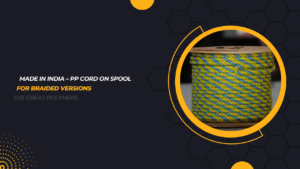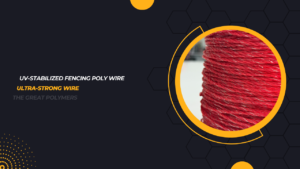Introduction
In the realm of fishing net production, the choice of materials plays a crucial role in determining the quality and longevity of the final product. PE (polyethylene) fishing twine has emerged as a preferred choice for manufacturers due to its exceptional properties and benefits.
Benefits of PE Fishing Twine for Fish Net Manufacturers
Durability
PE fishing twine exhibits remarkable durability, ensuring that fish nets withstand prolonged usage without compromising on performance. Its robust nature makes it resistant to abrasion and wear, ideal for harsh marine environments.
Strength
One of the key advantages of PE fishing twine is its superior strength-to-weight ratio. This inherent strength enables fish net manufacturers to produce nets capable of withstanding heavy loads and rough handling, thereby enhancing overall reliability.
Resistance to Elements
PE fishing twine boasts excellent resistance to environmental factors such as UV radiation, moisture, and chemicals. This resistance prolongs the lifespan of fish nets, making them suitable for various fishing conditions and ensuring consistent performance over time.
Manufacturing Process of PE Fishing Twine
The production of PE fishing twine involves several meticulous steps to ensure optimal quality and performance.
Material Selection
High-quality polyethylene resin is carefully selected as the primary raw material for manufacturing PE fishing twine. The selection process considers factors such as tensile strength, flexibility, and UV resistance to meet industry standards.
Extrusion Process
The chosen polyethylene resin undergoes an extrusion process, where it is melted and formed into a continuous filament. This filament is then stretched and cooled to achieve the desired diameter and tensile strength required for fishing twine.
Twisting and Winding
Once the filament is extruded, it undergoes twisting to enhance its strength and durability. The twisted filaments are then wound onto spools or bobbins, ready for use in fish net production.
Quality Control Measures in PE Fishing Twine Production
Ensuring the quality and reliability of PE fishing twine is paramount for manufacturers, prompting the implementation of stringent quality control measures.
Testing Methods
Various testing methods, including tensile strength testing, abrasion resistance testing, and UV exposure testing, are employed to assess the performance characteristics of PE fishing twine. These tests help identify any defects or inconsistencies in the product before it reaches the market.
Compliance with Industry Standards
Manufacturers adhere to industry standards and regulations to guarantee the quality and safety of PE fishing twine. Compliance with standards such as ASTM (American Society for Testing and Materials) ensures that the product meets or exceeds minimum requirements for performance and durability.
Applications of PE Fishing Twine in Fish Net Production
PE fishing twine finds widespread application in the construction of fish nets, offering versatility and reliability to manufacturers.
Net Construction
PE fishing twine is used in various components of fish nets, including the main body, floats, and lead lines. Its strength and durability contribute to the structural integrity of the net, ensuring efficient capture and retention of fish.
Mesh Size Options
Manufacturers can customize the mesh size of fish nets using PE fishing twine to suit specific fishing requirements. Different mesh sizes accommodate various fish species and fishing methods, providing flexibility and versatility to fishermen.
Cost-effectiveness of PE Fishing Twine
The cost-effectiveness of PE fishing twine extends beyond its initial purchase price, offering long-term benefits to fish net manufacturers.
Longevity
The durability and resistance of PE fishing twine translate into extended lifespan for fish nets, reducing the frequency of replacements and associated costs. This longevity enhances the overall cost-effectiveness of using PE fishing twine in fish net production.
Reduced Maintenance Costs
PE fishing twine requires minimal maintenance compared to alternative materials, further lowering operational expenses for fish net manufacturers. Its resistance to degradation and environmental factors minimizes the need for repairs or replacements, resulting in cost savings over time.
Environmental Impact of PE Fishing Twine
The environmental sustainability of PE fishing twine is a significant consideration for both manufacturers and conservationists.
Recyclability
PE fishing twine is recyclable, contributing to efforts aimed at reducing plastic waste in marine ecosystems. Manufacturers can recycle discarded twine to produce new products, mitigating the environmental impact associated with traditional disposal methods.
Reduced Ecological Footprint
The use of PE fishing twine in fish net production helps minimize the ecological footprint of fishing activities. Its durability and longevity reduce the need for frequent replacements, thereby reducing resource consumption and environmental disturbance.
Market Trends and Demand for PE Fishing Twine
The market for PE fishing twine is witnessing steady growth, driven by increasing demand from fish net manufacturers worldwide.
Global Market Analysis
Growing fishing activities, coupled with advancements in fishing net technology, are fueling the demand for high-performance materials such as PE fishing twine. Market analysis indicates a positive outlook for the industry, with opportunities for expansion in emerging markets.
Emerging Opportunities
The development of innovative manufacturing processes and the introduction of eco-friendly initiatives present new opportunities for PE fishing twine manufacturers. Investments in research and development aim to further enhance the properties and applications of PE twine, catering to evolving market demands.
Conclusion
PE fishing twine offers fish net manufacturers a versatile and cost-effective solution for producing durable and reliable fishing nets. Its exceptional properties, coupled with stringent quality control measures, ensure optimal performance and longevity in various fishing conditions. As the demand for sustainable fishing practices grows, PE fishing twine is poised to play a significant role in shaping the future of the fishing industry.
FAQs (Frequently Asked Questions)
- Is PE fishing twine suitable for both freshwater and saltwater fishing?
- Yes, PE fishing twine is suitable for use in both freshwater and saltwater environments due to its excellent resistance to corrosion and degradation.
- Can PE fishing twine be recycled?
- Yes, PE fishing twine is recyclable and can be processed to create new products, contributing to environmental sustainability efforts.
- What is the typical lifespan of fish nets made with PE fishing twine?
- Fish nets made with PE fishing twine have a longer lifespan compared to nets made with traditional materials, with proper maintenance and care.
- Are there any specific maintenance requirements for fish nets made with PE fishing twine?
- Fish nets made with PE fishing twine require minimal maintenance, primarily regular inspection for damage or wear and tear.
- Does the use of PE fishing twine contribute to sustainable fishing practices?
- Yes, the use of PE fishing twine contributes to sustainable fishing practices by reducing the environmental impact associated with fishing activities and minimizing waste.











Leave a reply